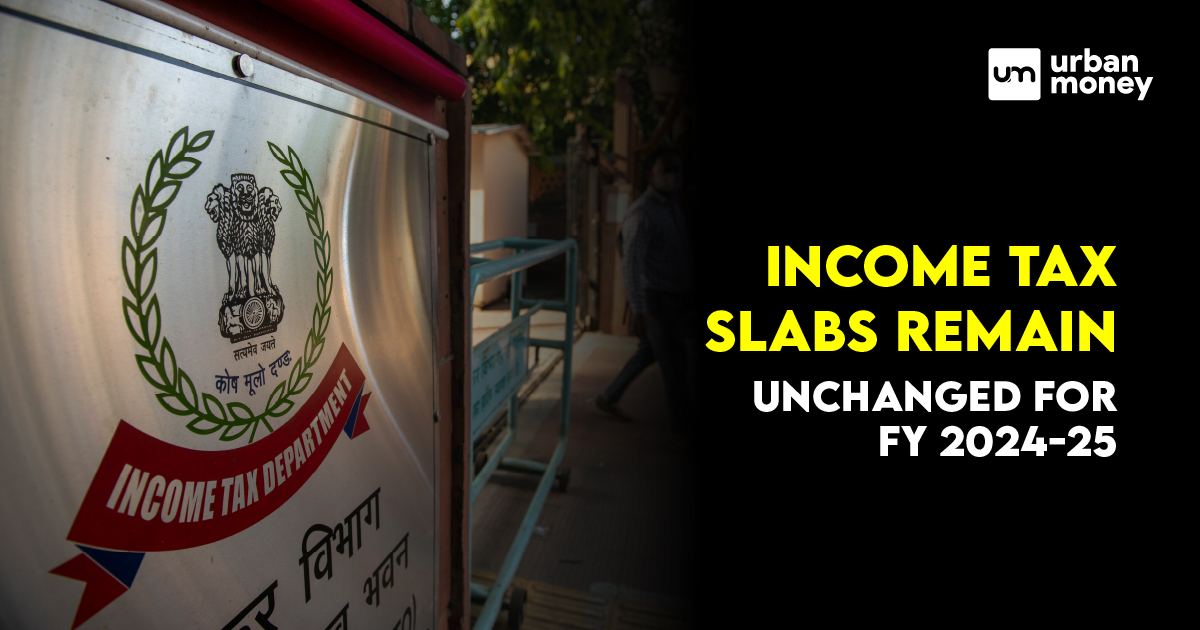Top 10 Best Private Banks in India List 2025
January 09, 2025
Mutual Funds Archive | Best Mutual Funds in India

September 02, 2022


Tax-saving or not, mutual funds are top-rated amongst financial enthusiasts since they significantly assist in expanding and enhancing wealth. A mutual fund is an investment scheme professionally managed by an asset management company (AMC). An AMC brings together a group of investors and assists them in investing their money in bonds, equities, etc.
Various mutual fund schemes are available for people to invest in India. However, choosing the top 10 mutual funds to invest in has become a tricky task. So, if you’re looking for the best mutual fund, consider your risk profile and the time horizon of your goals. Your ability to take risks are reflected in your risk profile.
As a result, a risk-taking individual may invest in high-risk funds unsuitable for a risk-averse investor. The investment horizon of your goals, i.e., the period during which you intend to hold an investment for a particular purpose, is also important. Investors might invest in high-risk funds for the long-term rather than short-term goals. To help you with your assets, we have compiled a list of the best mutual funds in 2022.
Table of Contents
ToggleMutual funds have been one of the most popular investment options and contrary to people’s beliefs – safe. The mutual fund houses very delicately design mutual fund schemes to meet an investor’s financial requirements, making the count of the schemes high. We have compiled a list to reduce the hassle of investigating the best mutual funds in India to invest in. An investor must go through our list to get familiar with the features and benefits of a few of the top mutual funds.
Opting for the best mutual funds scheme to invest in is a tough decision. Several factors need to be considered, such as return, risk appetite, company policies, performance etc. Therefore, to curtail this problem, we provide investment enthusiasts with a table listing the best mutual funds to invest in 2022.
| Mutual Fund Scheme | Sub-category |
| Axis Bluechip Fund | Large Cap Fund |
| Mirae Asset Large Cap Fund | Large Cap Fund |
| Parag Parikh Flexi Cap Fund | Flexi Cap Fund |
| UTI Flexi Cap Fund | Flexi Cap Fund |
| Axis Mid-cap Fund | Mid-cap Fund |
| Kotak Emerging Equity Fund | Mid-cap Fund |
| Axis Small-cap Fund | Small-cap Fund |
| SBI Small-cap Fund | Small-cap Fund |
| SBI Equity Hybrid Fund | Aggressive Hybrid Fund |
| Mirae Asset Hybrid Equity Fund | Aggressive Hybrid Fund |
| SBI Liquid Fund | Liquid Fund |
| HDFC Liquid Fund | Liquid Fund |
| HDFC Balanced Advantage Fund | Balanced Advantage Fund |
| ICICI Pru Balanced Advantage Fund | Balanced Advantage Fund |
| Aditya Birla SL Liquid Fund | Liquid Fund |
| ICICI Pru Liquid Fund | Liquid Fund |
| HDFC Mid-cap Opportunities Fund | Mid-cap Fund |
| SBI BlueChip Fund | Large-cap Fund |
| ICICI Pru BlueChip Fund | Large-cap Fund |
| Axis Long-Term Equity Fund | Large-cap Fund |
Note: The information provided in the above table is dated November 4 2022.
The Axis Bluechip Fund was established on January 5, 2010, and is an Axis Mutual Fund House Open-ended Large Cap Equity plan. The fund aims to ‘create long-term capital growth by investing in a diversified portfolio, largely of equities and equity-related securities of large-cap firms.’ It is compared to the S&P BSE 100 Total Return Index.
Large Cap Fund: The fund invests 86.43% of its assets in domestic equities, with 74.07% in Large Cap stocks and 2.45% in mid-cap stocks. The fund has 0.09% of its assets in debt, including 0.09% in government securities.
Suitable For: Investors seeking substantial profits over a period of at least three to four years. Simultaneously, these investors should be prepared for moderate losses in their assets.
Change in Crisil Rank: The fund’s Crisil rank was changed from 2 to 1 in the preceding quarter.
UTI Flexi Cap Fund – Regular Plan is a UTI Mutual Fund House Open-ended Flexi Cap Equity strategy. The fund was established on August 1, 2005.
The fund’s objective is to ‘create long-term capital appreciation by investing primarily in equities and equity-related instruments of companies across the market capitalization spectrum.’ It is compared to the NIFTY 500 Total Return Index.
Flexi Cap Fund: The Flexi Cap Fund invests 95.91% of its assets in domestic equities, with 42.99% in large-cap stocks, 24.38% in Mid Cap stocks, and 10.45% in small-cap stocks.
The fund has 0.18% of its assets invested in debt, with 0.18% in government securities.
Suitable For: Investors seeking substantial profits for at least three to four years. At the same time, these investors can expect moderate losses on their investments.
Change in Crisil Rank: In the preceding quarter, the fund’s Crisil rank was revised from 3 to 2.
The Axis Midcap Fund was established on February 18, 2011. It is an open-ended mid-cap equity plan managed by Axis Mutual Fund House. The fund’s objective is to ‘target long-term capital appreciation by investing largely in equities and equity-related securities of Mid Cap firms.’ Its performance is compared to the S&P BSE 150 MidCap Total Return Index.
Mid Cap Fund: The fund invests 85.08% of its assets in domestic equities, with 11.45% in large caps, 44.84% in mid-caps, and 13.58% in small caps.
Suitable For: Investors seeking substantial profits over a period of at least three to four years. Also, these investors must be ready for some modest losses on their investments.
Mirae Asset Large Cap Fund Direct-Growth is a Mirae Asset Mutual Fund Large Cap mutual fund scheme. This fund has been in operation for nine years and six months since its establishment on January 1, 2013. The Mirae Asset Large Cap Fund Direct-Growth has assets under management (AUM) of 30,299 crores as of June 2022 and is a medium-sized fund in its category. The fund’s expense ratio is 0.58%, higher than the average for Large Cap funds.
Large Cap Fund: The fund invests in domestic equities 98.1% of the time, with 64.75% in large-cap stocks, 11.1% in Mid Cap stocks, and 3.7% in small-cap stocks.
Suitable For: Investors seeking substantial profits over a period of at least three to four years. These investors should also be ready for modest losses on their investments.
Change in Crisil Rank: In the preceding quarter, the fund’s Crisil rank was raised from 3 to 4.
PPFAS Mutual Fund’s Parag Parikh Flexi Cap Fund Direct-Growth is a Multi Cap mutual fund plan. This fund had been operating for nine years and two months (approx.) since its establishment in May 2013. As of June 2022, the assets under management (AUM) of Parag Parikh Flexi Cap Fund Direct-Growth stood at 22,324 crores, making it a medium-sized fund in its category. The fund’s expense ratio is 0.79%, comparable to most other Multi Cap funds.
Flexi Cap Fund: The fund invests 70.85% of its assets in domestic equities, with 57.52% in large-cap stocks, 2.75% in Mid Cap stocks, and 9.71% in small-cap stocks.
Suitable For: Investors seeking substantial profits over a period of at least three to four years. These investors should prepare themselves for moderate losses in their investments at the same time.
Axis Mutual Fund House’s Axis Small Cap Fund – Regular Plan is an open-ended small cap equity strategy launched on November 29, 2013. The plan intends to create long-term capital appreciation by investing in a diversified portfolio of primary equities and equity-linked securities of small-size firms. The NIFTY Smallcap 250 Total Return Index serves as its benchmark.
Small Cap Fund: The fund invests 79.37% of its assets in domestic equities, of which 58.4% are small-cap stocks and 0.34% are large-cap stocks.
Suitable For: Investors seeking extremely high profits and looking to invest money for at least three to four years. These investors should also be prepared for the risk of simultaneously experiencing greater losses on their assets.
The SBI Mutual Fund House owns the open-ended small-cap equity SBI Small Cap Fund and was established on September 9, 2009. The fund’s investment objective states that by investing primarily in a well-diversified basket of equity equities of small-cap firms, the scheme attempts to provide investors with the potential for long-term capital growth and open-ended scheme liquidity. The S&P BSE 250 SmallCap Total Return Index serves as its benchmark.
Small Cap Fund: The fund invests 86.14% of its assets in domestic equities, of which 6.62% are held by mid-cap companies and 55.36% by small-cap companies.
Suitable For: Investors seeking extremely high profits and looking to invest money for at least three to four years. Additionally, these investors need to be ready for the possibility of concurrently suffering higher losses on their assets.
Change in Crisil Rank: The preceding quarter saw an update to Crisil Rank, which went from 2 to 3.
The Kotak Mahindra Mutual Fund House owns the open-ended mid-cap equity Kotak Emerging Equity Fund Regular Scheme and started operations on March 30, 2007. The Kotak Mahindra Mutual Fund attempts to achieve long-term capital appreciation from a portfolio of equities and equity-related instruments by investing primarily in mid-sized firms, according to its investment objective. The NIFTY Midcap 150 Total Return Index serves as its benchmark.
Mid Cap Fund: 95.13% of the fund’s holdings are domestic equities, with 5.68% being large-cap stocks, 54.21% being mid-cap stocks, and 23.7% being small-cap stocks.
Suitable For: Investors seeking high profits and looking to invest money for at least three to four years. These investors should also be prepared for the risk of experiencing modest losses on their assets at the same time.
The open-ended aggressive hybrid, SBI Equity Hybrid Fund is a product of the SBI Mutual Fund House, which was launched on December 31, 1995. The fund’s investment goal is to make investments ‘By investing in a combination of debt and equity.’ The plan aims to give investors both long-term capital appreciation and the liquidity of an open-ended scheme. The plan would invest in a diverse portfolio of high-growth company stocks and offset the risk by placing the remaining funds in fixed-income securities.’ The CRISIL Hybrid 35+65 Aggressive Index is used as a benchmark.
Aggressive Hybrid Fund: The fund invests 68.92% of its assets in domestic equities, of which 45.4% are large-cap companies, 8.93% are mid-cap stocks, and 3.37% are small-cap stocks. The fund has a debt investment of 20.02%, of which 8.0% are government securities and 11.54% are low-risk assets.
The open-ended aggressive hybrid, Mirae Asset Hybrid Equity Fund – Regular Plan, is a product of the Mirae Asset Mutual Fund Hoses and was launched on July 29, 2015. According to the fund’s investment objective, ‘The Scheme attempts to create current income and capital appreciation from a combined portfolio of stock and equity related instruments, debt, and money market instruments.’ The CRISIL Hybrid 35+65 Aggressive Index is used as a benchmark.
Aggressive Hybrid Fund: The fund’s investment in domestic equities is 73.36%, of which 46.65% is in large-cap companies, 10.22% in mid-cap stocks, and 3.18% in small-cap stocks. The fund has a debt investment of 22.35%, of which 12.5% are government securities, and 10.36% are low-risk assets.
Crisil Rank Update: In the most recent quarter, the fund’s Crisil ranking was changed from 2 to 3.
A mutual fund is an investment tool that invests pooled money in various stocks, government securities, bonds etc. Other than the top mutual fund companies claiming to offer the best mutual funds in India, there are various types of funds and options to choose from. Let us have a deeper understanding of how to select the best mutual funds for you.
The first and foremost task is to determine the goal of your investment. The goals can be long-term or short-term or a means to capital gains. Determination of financial goals can be perceived as a filter and will eliminate unwanted schemes. For instance, you must choose mutual funds for long-term investment if your goal is long-term capital gains.
Mutual funds are not risk-free. You must choose the scheme of which risk you can entertain since return and risk are directly proportional.
Capital appreciation is the mutual funds’ main objective. A long-term capital appreciation fund can be a wise choice if you intend to invest to satisfy a long-term requirement and can handle a moderate amount of risk and volatility. Growth and capital gain funds typically don’t distribute dividends. An income fund can be a better option if you require immediate income from your investments.
Your returns will be used to cover fund expenses. In some investment types, such as Exchange-Traded Funds (ETFs) or index funds, the expense ratio is crucial. Higher expense ratios in actively managed funds may be offset by the fund manager’s capacity to provide large alphas. On the other hand, index funds or ETFs, merely monitor the index and do not attempt to produce alpha. Consequently, the expense ratio is crucial for index funds and ETFs.
Investment in the best mutual funds is the right fit for people who:
Be it for short-term or long-term needs, we have covered all aspects and curated a list of the top 10 mutual funds to invest in 2022 that would suit all your preferences. However, sometimes our ‘best’ might not fit your needs, so you must do your research before investing in the above-mentioned mutual funds in India. Be mindful of investing in a scheme that suits your investment horizon, objectives, and risk profile. If you still have doubts or need professional assistance, seek the help of a mutual fund advisor.










© 2025 www.urbanmoney.com. All rights reserved.

Need Loan Assistance?


















